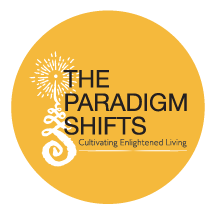A client of mine in Toronto, Frank, is challenged in this moment with an interesting dilemma. His project is stalled due to a number of factors outside his area of responsibility. He’s in a "wait and see" place, and what he’s finding is that he’s experiencing a lack of motivation, a sense of inadequacy and he’s questioning his competence.
"Something must be wrong with me or the way I’m doing my job." Frank says, as he’s struggling to find what’s missing in order to get some momentum going for his project. "On the one hand, I know there’s nothing for me to do but to wait for decision makers to take the next step. On the other hand, though, I keep wondering if there’s something I can do, or something I’m not doing that’s precipitating the stall. I feel unmotivated and I don’t know what to do about that."
What Frank is calling unmotivated stems from thoughts and beliefs that arise in this period of incubation for the project. In our coaching session he and I discussed the life cycle of essentially every living thing on the planet, including relationships, corporations and projects. By viewing his project within a natural and normal cycle of being, Frank was able to draw from a reality that allowed him to take his proper place in the unfolding of his project. At the same time, he couldn’t stop himself from asking "Am I doing something wrong? What’s mine to do here? Is there something I can do to hurry this incubation period along?"
Frank’s questions are good ones. First things first, though. One of Frank’s fears is that people are going to find out or decide that he is inadequate. So, in circumstances such as the one he currently is finding himself, the first thought that comes to mind is How am I being inadequate that is contributing to the stall out this project?
Frank’s boss has acknowledged him for his leadership role in bringing the project to this level of completion. He’s been clear with him that he’s done everything he can and now it’s time to wait for others to do their part in order to bring about the next level of the cycle of the project. So, by all indications, there are no inadequacies on the part of Frank. This is one choice-point Frank finds himself at: Can he let go of his fear of inadequacy and allow himself to experience the full capacity of his competence? This is an important step in him defining himself as a leader.
The second question: What’s mine to do?, is the next step. At first, Frank could find nothing to do while waiting for others to do what’s theirs to do; however with a little prodding he was able to come up with a list of five tasks that would be valuable to consider.
- Make a list of all the smaller projects and tasks that have not been attended to while he’s been focused on the larger project and take actions towards completing them
- Take time with individual members of his team, connect with them, perhaps provide some mentoring and supervision “ something he’s unable to do when caught up in the momentum of the project
- Meet with others in his company to talk about these types of dilemmas, perhaps brainstorming what’s possible to move projects like this along, as well as openly exploring what he may be missing, as well as provide support for each other when things are not going as planned
- Find projects outside the workplace that provide fulfillment when fulfillment isn’t forthcoming in his work
- Realize that he is more than the fulfillment of his project, and that he needs to explore other meaningful ways to bring fulfillment into his life.
For Frank, and so many of us, this last item is really important. We’ve forgotten that we are not our projects. We are not our degrees, certifications, job titles, our bank accounts, our successes or our failures. We are beings engaged with the life experiences we currently find ourselves in. We are here to be curious, to explore and experiment with what we know and what we haven’t yet discovered about ourselves. Fulfillment comes from courageously stepping into that adventure “ for Frank, the adventure is exploring who he is in the midst of nothing to do. That’s it!
Frank’s final question: Is there something I can do to hurry this incubation period along, is also important to consider. Frank is conscientious enough to ensure that he’s doing everything he can do to keep the project moving, as best he can. He is now in the dilemma of being with patience and understanding that some things take the time they take; you can’t pull on a seedling to help move it along to becoming a tree.
This period of time is growing Frank. He too is incubating, and something is happening within him, just like his project, that, when its time, will automatically generate the beginning of the next phase of the cycle of life. This just may be the very thing required for the project to begin to get some traction. Everything is interrelated. Frank is growing the project, the project is growing Frank, and a greater cycle of growth is being generated that is way beyond our imagination. There’s more to all of this than meets the eye!
